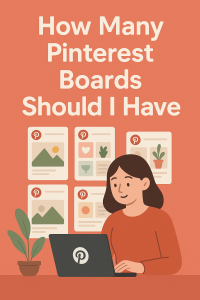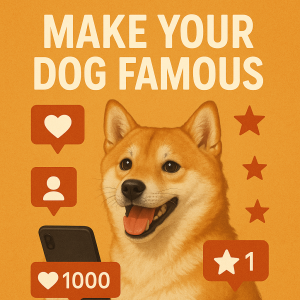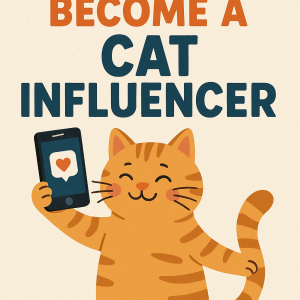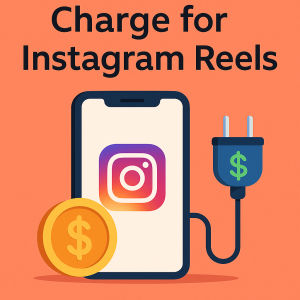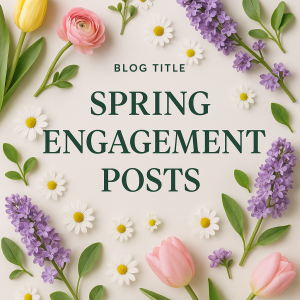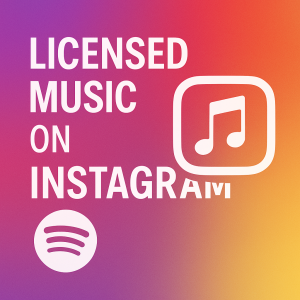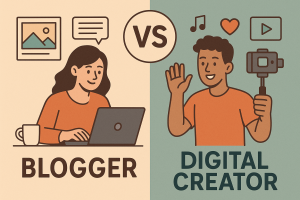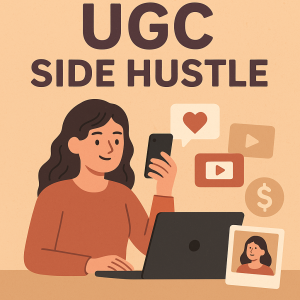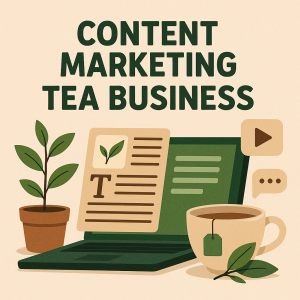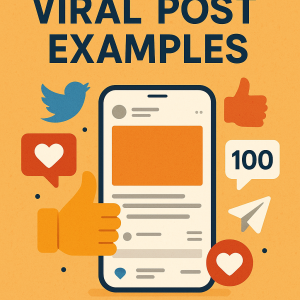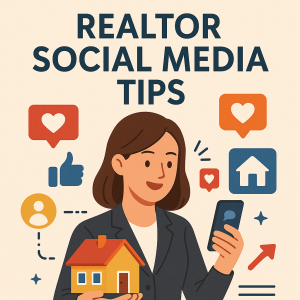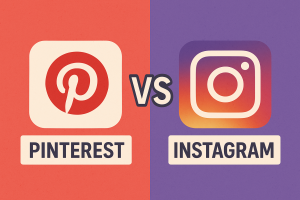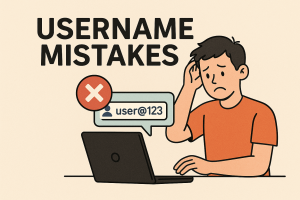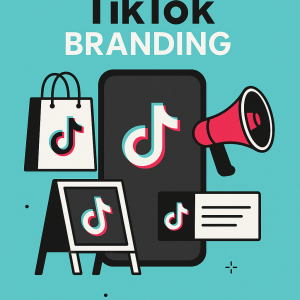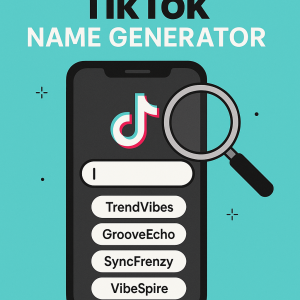Timing Is Everything on Social Media
Want more engagement? Knowing when to post is key. This guide provides 10 tactics to optimize your social media posting schedule for maximum impact. Learn how to analyze your data, understand platform specifics, map audience time zones, and even leverage algorithms and contextual events to boost your reach and engagement. Stop guessing, start strategizing.
1. Data-Driven Timing Analysis
Forget generic advice – the most effective way to optimize your social media posting schedule is by diving deep into your own data. Data-driven timing analysis involves examining your historical social media performance and audience activity to pinpoint the precise moments when your specific followers are most engaged. This method moves beyond general best practices and utilizes the unique patterns of your audience to create a highly customized posting schedule.
This approach leverages the analytics tools built into most social media platforms. Think Facebook Insights, Instagram Insights, Twitter Analytics, and so on. By examining historical post performance across different times and days, you can identify trends and create a posting schedule tailored to maximize your reach and engagement. This isn’t a static strategy; as your audience evolves, so too should your posting schedule. Regular analysis and adjustments are key to maintaining optimal performance. You might want to Learn more about Data-Driven Timing Analysis for further information.
This strategy deserves its place on this list because it offers the highest degree of personalization. Instead of guessing, you’re making informed decisions based on concrete evidence from your own audience. Best Time to Post on Social Media This translates to more effective posting, higher engagement, and ultimately, better results from your social media efforts.
Features:
- Utilizes platform analytics tools (Facebook Insights, Instagram Insights, Twitter Analytics, etc.)
- Examines historical post performance across different times and days
- Creates customized posting schedules based on your actual audience behavior
Pros:
- Highly tailored to your specific audience: You’re not relying on generalized best practices, but rather focusing on what works for your followers.
- Based on real data rather than generalizations: Decisions are driven by concrete evidence, not assumptions.
- Adapts to changes in your audience’s behavior over time: Continuous analysis allows you to adjust your strategy as your audience grows and evolves.
Cons:
- Requires sufficient historical data to be effective: New accounts or those with limited posting history will need to build up a data set before this method is truly effective.
- Time-consuming to analyze thoroughly: Extracting and interpreting the data requires dedicated time and effort.
- May need regular reassessment as audience grows or changes: Audience behavior isn’t static, so ongoing monitoring and analysis are necessary.
Examples:
- HubSpot reportedly increased their Twitter engagement by 17% after analyzing their audience data and strategically shifting their posting times.
- Buffer, a prominent social media management platform, practices what they preach. Their marketing team conducts quarterly data reviews to refine and adjust their posting schedule.
Tips for Implementation:
- Export your analytics data into a spreadsheet: This allows for easier sorting, filtering, and identification of patterns.
- Test posting at different times for at least 2-4 weeks before drawing conclusions: Give yourself enough time to gather statistically significant data.
- Look for engagement patterns by day of week and time of day: Pinpoint the peak engagement windows for your audience.
- Consider segmenting by content type: Different types of content (e.g., videos, images, text posts) may perform better at different times.
When to Use This Approach:
This strategy is ideal for established social media accounts with sufficient historical data. If you’ve been posting consistently for a while and are looking to refine your strategy and maximize your impact, data-driven timing analysis is the way to go. While newer accounts can benefit from general best practices initially, they should transition to this data-driven method as soon as they have enough data to analyze.
2. Platform-Specific Optimal Timing
Forget the one-size-fits-all approach. Platform-Specific Optimal Timing recognizes that each social media platform boasts its own unique ecosystem of user behavior and peak engagement times. Instead of blindly posting at the same time across all channels, this method encourages tailoring your schedule to match the rhythms of each individual platform. This involves researching the best practices for each network and understanding how Best Time to Post on Social Media its algorithm influences content visibility. This strategy differentiates timing strategies across platforms like Facebook, Instagram, LinkedIn, Twitter, and others, accounting for whether the network is typically used for professional or casual interactions.
This approach deserves a spot on this list because it offers a significant advantage: improved reach without requiring changes to your content itself. By simply optimizing when you post, you can dramatically increase the visibility of your message. For instance, LinkedIn, a primarily professional network, typically sees higher engagement during business hours, particularly Tuesday through Thursday, when users are actively networking and seeking industry insights. Conversely, platforms like Instagram, with a more casual user base, often experience peak engagement during evenings and weekends when people have more free time to browse and interact. Even within a single platform, specific strategies can yield impressive results. Think of Wendy’s and their snarky, on-point Twitter presence, often deployed during lunch hours when their target audience is craving both a burger and some online entertainment. Learn more about Platform-Specific Optimal Timing for additional insights.
Actionable Tips:
- Utilize Platform-Specific Scheduling Tools: Leverage tools like Facebook’s native scheduler or other third-party options to automate your tailored posting schedule.
- B2B Focus: For business-to-business content, prioritize posting during business hours on LinkedIn and Twitter.
- B2C Experimentation: For business-to-consumer content, experiment Best Time to Post on Social Mediawith evening and weekend posts on Instagram and Facebook.
- Time Zone Awareness: Consider the time zones where your audience is concentrated for maximum impact.
Pros:
- Respects Unique User Behavior: Acknowledges and leverages the specific rhythms of each platform.
- Improved Reach: Significantly increases visibility without altering content.
- Easy Implementation: Streamlined with scheduling tools.
Cons:
- Multiple Schedules: Requires managing separate posting schedules for each platform.
- Algorithm Changes: Platform algorithms are constantly evolving, necessitating regular updates to your strategy.
- Generalized Data: General platform data might not accurately reflect the behavior of your specific audience.
This method is particularly valuable for social media managers, content creators, business owners, and digital marketers looking to maximize their organic reach and engagement across various platforms. By understanding and adapting to the nuances of each network, you can significantly improve your social media performance. Studies by Hootsuite, Sprout Social, CoSchedule, and Later.com have consistently demonstrated the effectiveness of platform-specific timing strategies.
3. Audience Time Zone Mapping
Audience Time Zone Mapping is a strategic approach to social media scheduling that prioritizes the geographic location of your audience. Instead of posting at a single time for everyone, this method involves tailoring your posting schedule to align with the local time zones of your key audience segments. This ensures your content reaches followers when they are most likely online and engaged, maximizing visibility and potential impact. This method is especially crucial for brands with a global reach or those targeting audiences spread across multiple time zones
This approach earns its place on the “best time to post” list because it directly addresses the challenge of reaching a diverse, geographically dispersed audience. Its key features include mapping audience location data across different regions and time zones, creating tailored posting schedules that target peak activity times within those segments, and potentially involving multiple posts of similar content, each timed for optimal visibility in a specific geographic area. Learn more about Audience Time Zone Mapping. For instance, if you have a large following in both London and New York, you might schedule the same post for 9 am GMT and 9 am EST respectively.
Think of National Geographic, with its massive global following. They often employ this strategy, posting similar content at different times throughout the day to cater to their diverse audience. Similarly, streaming giants like Netflix adjust their announcement times for new shows based on the primary target region. A show launching primarily in the UK might be announced at a time optimized for UK viewers, even if it will be available globally.
Pros of Audience Time Zone Mapping:
- Maximizes global reach: Ensures your content is seen by a wider audience across different regions.
- Prevents missed content: Avoids the issue of followers missing your posts simply because they were asleep when you posted.
- Creates testing opportunities: Allows for testing content performance at different times of day in various regions.
Cons of Audience Time Zone Mapping:
- Increased complexity: Requires more planning and management compared to a single posting schedule.
- Potential for duplicate content: May involve posting similar Best Time to Post on Social Media content multiple times, which could annoy some followers who see duplicates.
- Data dependency: Requires detailed audience geographic data, which might not always be readily available.
Tips for Implementing Audience Time Zone Mapping:
- Analyze your audience: Use social media analytics platforms to pinpoint where your followers are located.
- Segment your calendar: Consider creating separate posting calendars for major geographic segments.
- Prioritize key announcements: For critical announcements, identify a time that works reasonably well across multiple key time zones. This might not be perfect for every region, but it minimizes the chances of the announcement being completely missed.
- Utilize scheduling tools: Leverage social media management tools with time zone targeting features, such as Buffer’s “Smart Schedule,” to automate the process.
This approach is best suited for businesses, brands, or influencers with a significant international following or those whose audience is distributed across multiple time zones within a large country. If your audience is primarily concentrated in a single geographic area, a simpler scheduling strategy might suffice. However, as your reach expands, embracing Audience Time Zone Mapping becomes increasingly vital for maximizing engagement and impact.
4. Competitor Timing Analysis
Competitor Timing Analysis is a strategic approach to social media scheduling that leverages the posting patterns of your competitors to optimize your own content visibility. This method involves monitoring when your key competitors post and analyzing the subsequent engagement (likes, comments, shares) their content receives. By understanding these patterns, you can identify optimal posting times, discover underutilized time slots, and even capitalize on proven successful posting windows within your specific niche. This allows you to strategically schedule your content to maximize reach and engagement without extensive initial testing.
This approach deserves a spot on this list because it provides valuable, industry-specific insights without requiring extensive A/B testing on your own audience. Features of a comprehensive competitor timing analysis strategy include: tracking the posting schedules of key competitors in your industry, analyzing engagement rates on competitor content by time and day, and identifying potential timing opportunities or oversaturated periods. For example, Dollar Shave Club reportedly identified early morning posting gaps when competitors weren’t active, allowing them to capture an audience before the market became saturated. Fashion brands often analyze when major influencers post to avoid overlap and ensure their content gets seen. You can learn more about Competitor Timing Analysis and related strategies for optimizing your online presence.
Actionable Tips for Implementing Competitor Timing Analysis:
- Create a tracking spreadsheet: Monitor competitor Best Time to Post on Social Media posting times for at least 2-3 weeks to identify consistent patterns. Note the time of posting, the type of content, and the engagement metrics.
- Look for patterns in high-performing content: Pay close attention to the timing of their most successful posts. This can reveal optimal posting windows.
- Test posting shortly before competitors: Experiment with posting shortly before your competitors to potentially capture audience attention first.
- Consider both gaps and head-to-head timing: Don’t just focus on posting in gaps. Test posting head-to-head with competitors to see if you can outperform them in engagement.
Pros:
- Provides industry-specific insights without extensive testing.
- Helps identify underutilized time slots with less competition.
- Can reveal timing patterns that work specifically in your niche.
Cons:
- Competitors may not have optimized their own timing, leading to inaccurate conclusions.
- Different audience demographics might respond differently to the same posting times.
- Requires ongoing monitoring as competitor strategies and algorithms change.
This method is particularly useful for businesses entering a new market or those looking to refine their existing social media strategy. It’s also valuable for content managers and digital marketers who want to gain a competitive edge and maximize the impact of their content. While tools like BuzzSumo and Sprout Social’s competitive reports can automate parts of this process, even a simple spreadsheet can provide valuable insights. Remember to combine competitor analysis with your own audience data for the most effective results.
5. Content Type Timing Optimization
Content Type Timing Optimization takes a granular approach to social media scheduling by recognizing that different content formats resonate with audiences at different times. Instead of adopting a one-size-fits-all posting schedule, this strategy involves analyzing the performance of various content types (videos, images, text posts, links, polls, etc.) and creating specialized posting schedules based on when each format is most likely to generate engagement.
This method works by first categorizing your content by type. Then, you dive into your social media analytics to identify patterns in engagement for each category. For instance, you might find that your video content performs best on weekday evenings, while your link posts get more clicks on Tuesday mornings. Based on this data, you create a tailored content calendar, scheduling specific content formats to align with their peak engagement windows.
Examples of Successful Implementation:
- BuzzFeed: Known for its entertaining video content, BuzzFeed often posts videos in the evenings when users have more leisure time and are more likely to watch longer-form content.
- LinkedIn Influencers: Many LinkedIn influencers share longer-form, professional articles and thought-leadership pieces on Tuesday mornings when professionals are starting their workweek and planning their agendas.
Actionable Tips for Readers:
- Videos: Often perform better in evenings and on weekends when users have more free time.
- Quick Updates & News: Can perform well during commuting hours (morning and evening rush hour) when people are checking their phones.
- Educational Content: Often gets better engagement midweek during business hours when professionals are focused on learning and development.
- Visual Content (Images, Infographics): Test posting these during lunch breaks when users are casually browsing their feeds.
- Polls and Interactive Content: Experiment with posting these during the afternoon slump when users might appreciate a quick distraction. Don’t forget timing — here’s the best time to post on each platform for max engagement.
When and Why to Use This Approach:
Content Type Timing Optimization is particularly beneficial when you have a diverse content mix and are aiming to maximize engagement across all formats. It introduces structure to your content planning and can significantly improve performance without requiring changes to the quality of your content itself. This method is ideal for established social media presences with sufficient historical data to analyze performance trends across different content types.
Pros:
- Maximizes engagement by aligning content type with optimal viewing times.
- Provides structure and data-driven insights to content planning.
- Can significantly improve performance without altering content quality.
Cons:
- Increases the complexity of content calendar management.
- Requires sufficient data across various content types to be effective.
- May limit flexibility in spontaneous content publishing.
This strategy earns its place on the list because it goes beyond basic scheduling practices and provides a data-driven approach to optimizing content delivery. By understanding the nuances of your audience’s engagement patterns for different content types, you can significantly improve your social media ROI and build a stronger connection with your followers. Pioneered by content marketing experts like Gary Vaynerchuk and adopted by successful media companies like BuzzFeed, Content Type Timing Optimization is a crucial strategy for any serious social media marketer.
6. Algorithmic Timing Strategy
The Algorithmic Timing Strategy represents a sophisticated approach to social media posting that prioritizes working with platform algorithms, rather than against them. Instead of solely focusing on when your audience is online, this method emphasizes understanding how each platform’s algorithm prioritizes and distributes content. By posting at times that maximize the initial boost from these algorithms, you increase the likelihood of your content gaining continued visibility in user feeds, ultimately reaching a wider audience organically.
This strategy revolves around three core features: tracking Best Time to Post on Social Media and responding to algorithm updates across different platforms, focusing on recency factors in feed algorithms (how recently content was posted), and considering how initial engagement (likes, comments, shares) impacts long-term visibility.
How it Works:
Social media algorithms are designed to show users content they are most likely to engage with. These algorithms consider various factors, including recency, engagement, and user behavior. The Algorithmic Timing Strategy aims to capitalize on these factors. For example, if an algorithm prioritizes recent content, posting just before peak usage times allows your content to catch the initial wave of active users, boosting its visibility and potentially leading to higher engagement. This initial engagement further signals to the algorithm that the content is valuable, leading to even greater reach.
Examples of Successful Implementation:
- Instagram Business Accounts: Posting Stories between 7-9pm capitalizes on the 24-hour visibility cycle of Stories, maximizing exposure during peak evening usage.
- Twitter Accounts: Posting just before predicted peak activity times allows tweets to benefit from the initial algorithmic boost as users flood the platform.
Actionable Tips:
- Preemptive Posting: Post important content shortly before predicted high-traffic periods to maximize initial engagement.
- Rapid Response: Respond quickly to comments after posting to signal quality content and active engagement to the algorithm.
- Chronological Considerations: For platforms with chronological feed options (like Twitter), timing is even more crucial as recency plays a direct role in visibility.
- Story Format Strategy: Consider how disappearing story formats (like Instagram and Facebook Stories) affect your timing strategy, aiming for peak viewership hours within that 24-hour window.
When and Why to Use This Approach:
This strategy is ideal for those looking to maximize organic reach and stay ahead of the curve in the ever-evolving social media landscape. It’s particularly beneficial for businesses, content creators, and marketers who rely on social media for audience growth and engagement.
Pros:
- Algorithm Alignment: Works with platform algorithms, not against them.
- Increased Organic Reach: Can significantly increase organic visibility without paid promotion.
- Adaptability: Adapts to platform changes more effectively than static scheduling.
Cons:
- Constant Adaptation: Algorithms change frequently, requiring ongoing monitoring and adjustment.
- Platform Specificity: Different algorithms for each platform increase complexity.
- Audience vs. Algorithm: Can be difficult to separate algorithm effects from genuine audience preferences.
Popularized By:
Social Media Examiner, algorithm experts like Michael Stelzner, and Best Time to Post on Social Media platform-specific strategists have all contributed to the development and popularization of this approach.
This strategy deserves its place on this list because it acknowledges the crucial role algorithms play in content distribution. By understanding and adapting to these algorithms, you can significantly improve your organic reach and overall social media performance. While it requires constant monitoring and adjustment, the potential benefits in terms of increased visibility and engagement make the Algorithmic Timing Strategy a valuable tool for any serious social media marketer.
7. Audience Activity Pattern Monitoring
Forget generic advice about the “best” times to post. Audience Activity Pattern Monitoring throws the static schedule out the window and focuses on when your specific audience is actually online and engaged. This dynamic approach prioritizes real-time behavior over predicted patterns, allowing you to tailor your posting schedule to the live pulse of your followers.
Instead of relying on pre-determined timeslots, this strategy leverages real-time analytics and platform notifications to pinpoint moments of peak engagement. It’s about being responsive and capitalizing on organic activity as it happens. This might involve dynamic adjustments to your posting schedule, publishing content when your audience is most receptive, even if it falls outside conventional “optimal” hours.
How it Works:
This method requires actively monitoring your social media analytics dashboards or utilizing dedicated social listening tools. Look for spikes in activity, whether they’re related to current events, trending topics, or simply the natural ebb and flow of your audience’s online presence. The key is to be ready to engage and publish content when these opportunities arise.
Examples of Success:
- Oreo’s “Dunk in the Dark” Super Bowl Tweet: During a power outage at the 2013 Super Bowl, Oreo’s social media team seized the moment with a witty tweet encouraging fans to “dunk in the dark.” This real-time marketing masterpiece capitalized on a spontaneous event and garnered massive engagement.
- News Organizations: News outlets constantly monitor social media and website traffic to identify breaking stories and trending topics. They then tailor their publishing schedule to capitalize on these real-time spikes in audience interest.
Tips for Implementation:
- Use Platform Notifications: Enable notifications for engagement on your social media platforms. This will alert you when activity is unusually high, signaling a potential opportunity to post.
- Prepare Content in Advance: Have a backlog of content ready to deploy when unexpected activity spikes occur. This allows you to react quickly and capitalize on real-time opportunities.
- Identify Recurring Patterns: While this strategy focuses on real-time activity, look for recurring patterns in spontaneous engagement. This can inform your overall content strategy and help you anticipate future activity spikes.
- Engage to Stimulate Activity (Smaller Accounts): If you have a smaller following, actively engage with your followers and other accounts to stimulate activity and create opportunities for real-time engagement.
Pros:
- Highly Responsive to Actual Audience Behavior: This method directly addresses when your audience is most active, leading to potentially higher engagement rates.
- Adapts Quickly to Changing Patterns: It’s inherently flexible and adjusts to shifts in your audience’s online behavior.
- Can Identify Unique Activity Windows Specific to Your Audience: This allows you to discover optimal posting times that are specific to your followers and may differ from generalized best practices.
Cons:
- Requires Constant Monitoring or Dedicated Tools: Staying on top of real-time activity can be time-consuming and may necessitate the use of social listening tools.
- Less Predictable for Advance Content Planning: The dynamic nature of this approach makes it challenging to plan content releases far in advance.
- May Lead to Irregular Posting Schedules: Posting based on real-time activity can result in an inconsistent posting schedule, which might not be suitable for all brands.
Why This Approach Deserves Its Place on the List:
While other methods offer general guidelines, Audience Activity Pattern Monitoring provides a targeted, data-driven approach to optimizing your posting schedule. It allows you to move beyond assumptions and connect with your audience when they are most receptive, maximizing your chances of engagement and reach. Best Time to Post on Social Media This strategy is especially valuable for brands that prioritize real-time engagement and are willing to invest the time and resources required for active monitoring. It’s a testament to the power of understanding and responding to your audience’s actual behavior.
8. Cross-Platform Scheduling Strategy
The Cross-Platform Scheduling Strategy is a sophisticated approach to social media management that focuses on coordinating content across multiple platforms. Instead of treating each platform in isolation, this method creates an integrated social Best Time to Post on Social Media media presence by strategically staggering similar content to reach different audiences at optimal times. This creates a cohesive brand narrative and maximizes visibility without overwhelming followers who may follow you on multiple networks. It’s a crucial technique for anyone managing a complex social media presence across multiple channels.
This strategy works by carefully planning and scheduling content across various platforms. Rather than posting the same message simultaneously everywhere, it involves adapting and tailoring content to suit each platform’s strengths and audience demographics while maintaining a consistent overall message. For example, you might release a short teaser video on Twitter to generate buzz, followed by the full-length video on YouTube, and then initiate a discussion about the video’s topic on LinkedIn. This staggered approach leverages the unique characteristics of each platform and creates multiple touchpoints with your audience throughout the day or week.
Successful implementations of this strategy can be seen with organizations like NASA. They frequently stagger content releases across platforms, often using Twitter for quick updates and then sharing more in-depth information and visuals on Instagram and Facebook as a developing story unfolds. Major product launches also leverage this strategy with timed reveals across different social media channels to generate excitement and maximize reach.
Features of a Cross-Platform Scheduling Strategy:
- Coordinates content publication across multiple platforms: This ensures a unified message while catering to the specific nuances of each platform.
- Staggers similar content: Prevents follower fatigue by avoiding simultaneous identical posts and optimizes reach by targeting different audiences at different times.
- Creates an integrated cross-platform narrative: Builds a cohesive story across platforms, allowing for deeper engagement and a richer brand experience.
Pros:
- Prevents content overlap: Avoids annoying users who follow you on multiple platforms with repetitive content.
- Creates multiple touchpoints: Increases brand visibility and reinforces messaging through repeated, yet varied, exposure.
- Makes more efficient use of content: Repurposes and adapts content for different platforms, maximizing the value of each piece.
Cons:
- Requires careful coordination and planning: Implementing this strategy effectively necessitates a well-structured content calendar and a clear understanding of each platform’s audience.
- Can be complex to manage without scheduling tools: Manual management can quickly become overwhelming. Tools like Hootsuite and Buffer greatly simplify the process.
- May sacrifice optimal timing on some platforms for overall strategy: Striking a balance between the overall narrative and individual platform best practices can be challenging.
Tips for Implementing a Cross-Platform Scheduling Strategy:
- Create a cross-platform content calendar: Visualize all scheduled posts across platforms in a single view. This allows for easy identification of overlaps and gaps in your content schedule.
- Consider how content can build across platforms: Think strategically about how a piece of content can be adapted and expanded upon as it moves across different platforms. For example, a teaser on Twitter, full content on Instagram, and discussion on LinkedIn.
- Use different strengths of each platform at different times of day: Capitalize on peak engagement times for each platform and tailor your content accordingly.
- Avoid posting identical content simultaneously across all platforms: This creates a sense of redundancy and can discourage engagement.
- Learn more about Cross-Platform Scheduling Strategy
This strategy deserves its place on this list because it provides a solution for businesses and individuals seeking to maximize their social media presence across multiple platforms. It moves beyond basic scheduling and enters the realm of strategic content orchestration, creating a cohesive and engaging brand experience for followers across the digital landscape. It’s particularly relevant for those managing multiple accounts and seeking to leverage the unique strengths of each platform while avoiding redundancy. This approach, popularized by major brands with integrated social teams, social media management platforms, and content strategists like Jay Baer, is essential for anyone looking to elevate their social media game.
9. Lifecycle-Based Timing Strategy
The Lifecycle-Based Timing Strategy is a more sophisticated approach to social media timing that moves beyond general best practices and delves into the nuances of your customer journey. It recognizes that your audience interacts with your brand at different stages – from initial awareness to loyal advocacy – and each stage requires a different type of content delivered at the optimal time. Instead of a one-size-fits-all approach, this strategy tailors your posting schedule to match the user’s mindset and their current position in the sales funnel.
How it Works:
This strategy segments your content and its corresponding posting schedule based on the four primary stages of the customer journey:
- Awareness: This stage focuses on introducing your brand and its value proposition to potential customers.
- Consideration: At this stage, the user is aware of your brand and is actively evaluating your offerings against competitors.
- Decision: The user is ready to make a purchase and is looking for the final push or incentive. (While sometimes combined with the consideration stage, recognizing it separately for timing can be beneficial.)
- Loyalty: This stage focuses on retaining existing customers, fostering community, and encouraging repeat purchases.
By understanding what your audience needs at each stage, you can deliver the right message at the right time, maximizing its impact.
Examples of Successful Implementation:
- Sephora: Posts makeup tutorials and beauty inspiration content on weekend mornings when customers are likely to have more free time to experiment and try new looks. This aligns with the consideration and decision phases.
- B2B Companies: Often share educational content (webinars, white papers) midweek when professionals are actively working and seeking solutions. Promotional content, such as special offers or product demos, might be shared earlier in the week to capture attention as people plan their week’s activities. This differentiates between the awareness/consideration and decision phases.
Actionable Tips:
- Map Your Customer Journey: Clearly define the typical steps a customer takes from initial awareness to becoming a loyal customer. Identify the pain points, questions, and needs they have at each stage.
- Align Content with Stages: Develop content specifically addressing the needs of each stage. Awareness content might be introductory and educational, while consideration content could be comparison guides or customer testimonials. Loyalty content might include exclusive offers, community engagement activities, or user-generated content features.
- Time Your Posts Strategically: Awareness content often performs better earlier in the week when people are planning and researching. Consideration content works well midweek when decisions are being actively evaluated. Loyalty and community-focused content often sees higher engagement on weekends when users have more leisure time.
When and Why to Use This Approach:
This approach is ideal for businesses that have a clearly defined customer journey and are looking to optimize their social media marketing for conversions and long-term relationship building. It’s particularly effective for businesses with complex products or services that require multiple touchpoints before a purchase decision is made.
Pros:
- Creates more contextually relevant experiences: By aligning content with the customer journey, you deliver information that is timely and valuable, enhancing user experience.
- Improves conversion rates: Matching content intent with user mindset and timing increases the likelihood of driving desired actions.
- Strengthens relationship with audience: Appropriate timing shows respect for your audience’s time and needs, fostering trust and loyalty.
Cons:
- Requires sophisticated understanding of customer journey: Implementing this strategy requires thorough research and analysis of your target audience and their behavior.
- More complex to implement and measure: Managing different content streams and timing schedules for various stages requires more planning and organization.
- May need different timing strategies for different audience segments: If you have diverse audience segments, you might need to adapt the timing strategy accordingly.
Popularized By:
Customer journey marketing experts, HubSpot’s inbound marketing methodology, and content strategists focusing on funnel optimization have all contributed to the development and popularization of lifecycle-based timing strategies.
This strategy earns its place on this list because it provides a framework for truly connecting with your audience on a deeper level. By understanding the customer journey and aligning your social media content accordingly, you can move beyond simple scheduling and create a more impactful and effective social media presence.
10. Contextual Event Timing
Contextual Event Timing is a strategic approach to social media posting that leverages external events, trends, seasons, and cultural moments to maximize audience engagement. Instead of adhering to a rigid posting schedule, this method focuses on aligning content with what’s already capturing your audience’s attention. By syncing your social media calendar with relevant happenings in the world, you can tap into existing conversations and significantly boost your content’s relevance and reach.
How it Works:
This strategy revolves around identifying key events and trends that resonate with your target audience. These could include holidays, industry conferences, product launches, movie premieres, popular TV show finales, or even trending hashtags. The idea is to create and schedule content that relates to these events, capitalizing on the heightened interest and conversation surrounding them. This requires proactive planning and a keen understanding of your audience’s interests and online behavior.
Examples of Successful Implementation:
- Spotify Wrapped: Spotify’s year-end Wrapped campaign is a prime example of successful contextual event timing. By releasing personalized listening summaries just before New Year’s, they tap into a period of reflection and sharing, generating massive social media buzz and user engagement.
- Super Bowl Advertisers: Brands advertising during the Super Bowl often coordinate their social media campaigns with their TV commercials, amplifying their message and encouraging real-time interaction with viewers. They leverage the massive viewership and online conversation surrounding the event to maximize their reach and impact.
Tips for Effective Contextual Event Timing:
- Create an Annual Calendar: Start by building a calendar of relevant events in your industry or audience’s sphere of interest. This will allow you to anticipate opportunities and plan content in advance.
- Strategic Timing: While aligning with major events is key, avoid posting exactly when attention is focused elsewhere (e.g., during the Super Bowl). Instead, consider posting before or after the peak to capture pre-game excitement or post-game discussions.
- Time Zone Awareness: For global events, be mindful of different time zones and schedule your posts accordingly to reach your audience at the optimal time.
- Advance Preparation: For predictable seasonal moments like holidays, prepare your content well in advance to ensure a smooth and timely execution.
Pros and Cons:
Pros:
- Leverages Existing Interest: Taps into pre-existing audience attention and engagement around trending topics.
- Increased Relevance and Engagement: Content feels more timely and relevant, leading to higher engagement rates.
- Predictable Planning: Allows for strategic planning around predictable recurring events.
Cons:
- Staying Current: Requires constant monitoring of trends and events.
- Content Competition: Increased competition around popular events can make it harder to stand out.
- Brand Alignment: Not all events may align with your brand voice or values.
Why This Deserves Its Place in the List:
Contextual Event Timing elevates social media strategy beyond simple scheduling. It emphasizes understanding audience behavior and leveraging external factors to maximize impact. By connecting with what’s already resonating with your target demographic, you can create more meaningful interactions and achieve significantly better results than with generic, time-based posting schedules. This approach is particularly valuable for real-time marketing teams, seasonal businesses, and brands in the sports and entertainment industries.
10-Point Comparison: Best Time to Post on Social Media
| Strategy | 🔄 Complexity | ⚡ Resources | 📊 Outcomes | 💡 Use Cases | ⭐ Advantages |
|---|---|---|---|---|---|
| Data-Driven Timing Analysis | Medium – data extraction and analysis | Requires analytics tools & historical data | Tailored schedules yielding improved engagement | Brands with robust historical analytics data | Personalized and adaptable based on real data |
| Platform-Specific Optimal Timing | Low to Medium – platform research | Standard scheduling and research tools | Enhanced reach per platform | Businesses with activity across multiple networks | Customizes timing per platform for greater visibility |
| Audience Time Zone Mapping | High – geographic segmentation | Demographic insights and specialized tools | Optimized global outreach | International or regionally diverse audiences | Maximizes relevance across different time zones |
| Competitor Timing Analysis | Medium – competitor monitoring | Competitive research and tracking tools | Identifies underutilized engagement windows | Industries with clear competitor posting patterns | Leverages niche opportunities with minimal competition |
| Content Type Timing Optimization | Medium-High – content categorization | Detailed content performance data | Higher engagement by matching content type | Content-driven brands with varied formats | Optimizes strategy by aligning content type with peak times |
| Algorithmic Timing Strategy | High – rapid adaptation required | Advanced monitoring and agile response systems | Boosted organic reach via initial engagement | Brands reliant on complex social media algorithms | Works with platform algorithms to maximize distribution |
| Audience Activity Pattern Monitoring | High – real-time tracking needed | Real-time analytics and notification systems | Dynamically responsive posting adjustments | News outlets and reactive, trend-focused campaigns | Highly responsive; adapts quickly to audience behavior |
| Cross-Platform Scheduling Strategy | Medium – coordination across channels | Comprehensive scheduling tools | Cohesive multi-channel presence | Brands active on multiple platforms simultaneously | Prevents content overlap while maximizing overall visibility |
| Lifecycle-Based Timing Strategy | High – requires customer journey insight | Detailed customer data and segmentation tools | Increased contextual engagement | Brands with defined customer journey stages | Aligns content timing with audience intent and conversion |
| Contextual Event Timing | Medium – event and trend tracking | Trend monitoring tools and event calendars | Peaks engagement during external events | Seasonal campaigns and event-driven promotions | Leverages external events to boost relevance and engagement |
Schedule and Conquer Your Social Media
Mastering the art of timing your social media posts is crucial for maximizing reach, engagement, and ultimately, your return on investment. From analyzing your audience’s activity patterns and leveraging platform-specific best practices to understanding the nuances of algorithmic timing and content type optimization, the strategies discussed in this article provide a robust framework for success. Key takeaways include the importance of data-driven decision making, continuous monitoring, and the power of a well-defined cross-platform scheduling strategy. For a deeper dive into optimizing your posting schedule, check out this comprehensive guide: 10 Strategies: Best Time to Post on Social Media (2025) from Publora. This resource explores these concepts in greater detail, helping you fine-tune your approach.
By implementing these techniques, you can transform your social media presence from sporadic and ineffective to consistent and impactful. Stop guessing and start strategically scheduling your content to connect with your audience when they’re most receptive. This translates to increased visibility, higher engagement rates, and stronger brand recognition—essential elements for achieving your social media objectives.
Ready to take your social media scheduling to the next level? Galaxyz helps you implement these strategies effortlessly by automating your posting schedule across multiple platforms based on your optimized timing analysis. Streamline your workflow and maximize your impact with Galaxyz.


